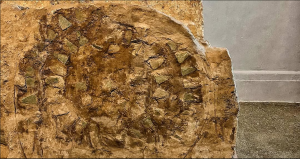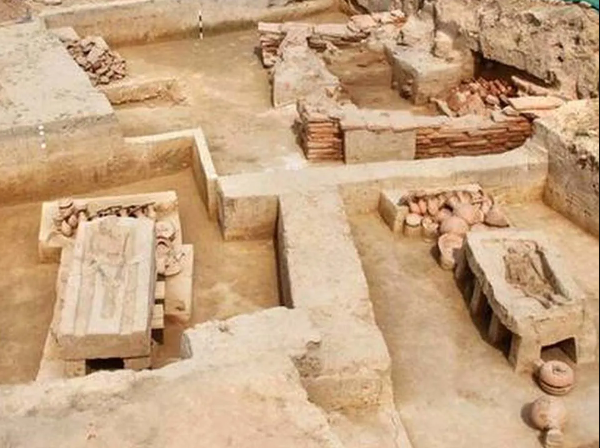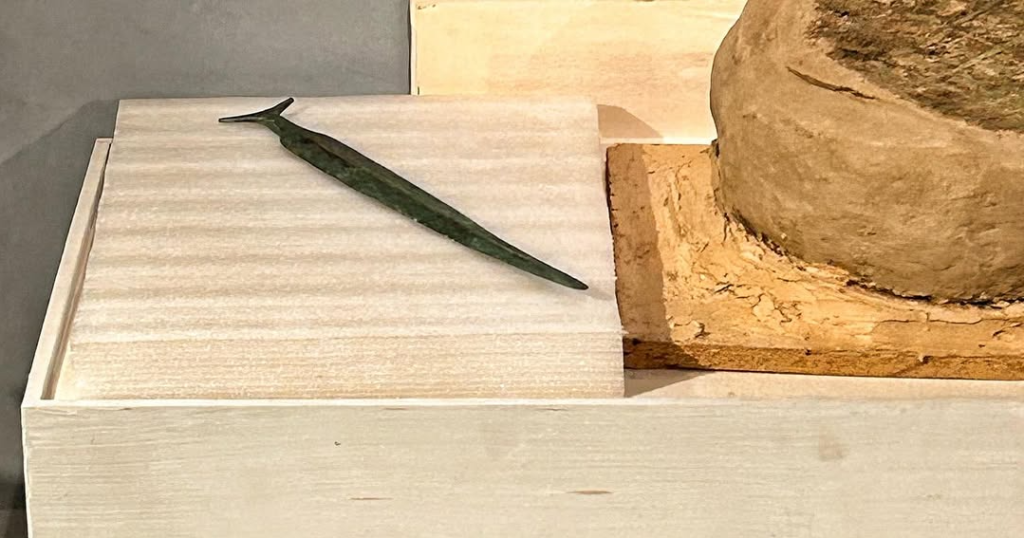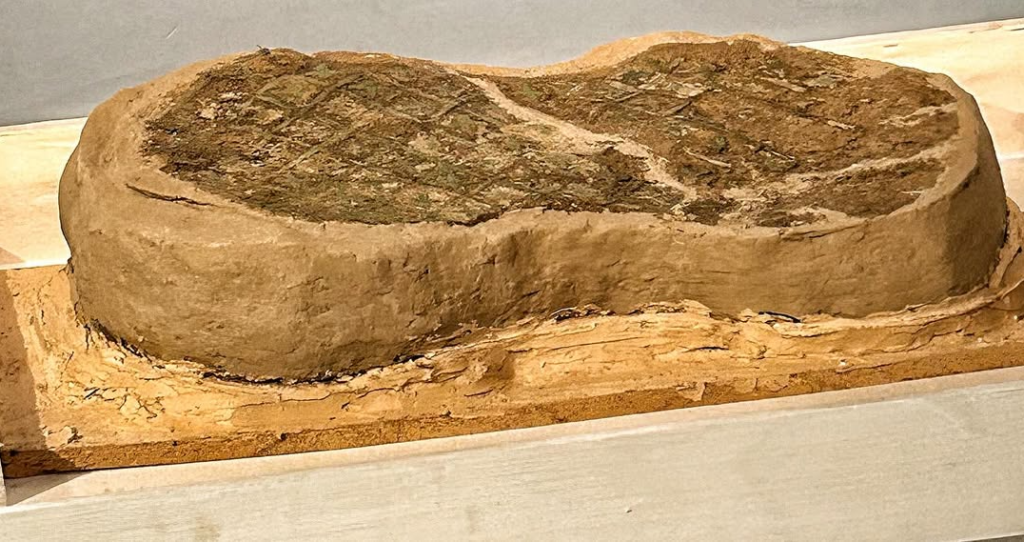
In 2018, the quiet village of Sinauli in Uttar Pradesh became the center of global attention when archaeologists from the Archaeological Survey of India (ASI) made a groundbreaking discovery. Beneath the surface, they uncovered a 4,000-year-old burial site with very first chariots, wooden coffins, weapons, and other artifacts. These findings changed the way historians understand ancient Indian civilizations and the early cultures that lived in the Gangetic plains. Let’s explore what was found at Sinauli, what it means, and why it matters.
Sinauli is located in the Baghpat district of western Uttar Pradesh, about 70 km from Delhi. The site was first excavated in 2005 by the ASI, and again in 2018 under the direction of Dr. Sanjay Kumar Manjul. The second excavation brought global attention due to the discovery of royal burials and Chariots.
Radiocarbon dating places the burials around 2000–1800 BCE, during the Late Bronze Age. This period overlaps with the decline of the Indus Valley Civilization and the rise of regional cultures like the Ochre Coloured Pottery (OCP) culture in northern India. The artifacts found at Sinauli — especially the pottery styles and copper objects — are consistent with the OCP culture.
Unlike earlier Harappan cities, Sinauli reveals a society that used wooden coffins covered with copper sheets, weaponry, and Chariots. These features do not resemble classic Harappan burials, which were simpler. Instead, Sinauli suggests a distinct, militarized elite that used elaborate burial practices.
Historical and Cultural Significance
The Sinauli discoveries are significant for several reasons. They show that around 2000 BCE, a warrior class existed in the Gangetic plains with advanced burial practices, copper metallurgy, and a complex belief system. Let’s look at some of the key findings:
Sinauli Chariots

Perhaps the most talked-about discovery at Sinauli was the unearthing of Sinauli Chariots. These Chariots were made of wood and had solid disc wheels, covered in copper sheeting. Each Chariot was found placed beside or inside burial pits.
Unlike later Indo-Aryan or Vedic chariots, which had spoked wheels for speed and were pulled by horses, the Sinauli Chariots had no spokes. Several scholars suggest that the solid wheels belong to carts, therefore are not from chariots.. Experts believe these carts were used for processions or as status symbols rather than for warfare.
Wooden Coffins with Copper Decorations

Three wooden coffins were discovered, each decorated with copper plating and symbolic carvings. One coffin lid featured nine human faces wearing horned headgear and peepal-leaf shaped crowns. This type of decoration is unique in Indian archaeology and suggests a complex belief system.
Textile imprints were found on the coffins, indicating that they were wrapped or dressed during burial, possibly as part of a funeral ritual. These details show that the society had organized funeral customs and spiritual beliefs regarding the afterlife.
Weapons and Armor


Each of the elite burials contained copper swords, daggers, shields, and helmets. One helmet was found placed upside down in a coffin. The swords had central ridges and were strong enough for real combat, suggesting that the individuals buried were trained warriors.
The ASI also found a torch stand, pottery, a copper mirror, bone arrowheads, beads, and a cooking pot inside or near the coffins. This shows that the dead were buried with their possessions, possibly for use in the afterlife.
Evidence of Rituals and Symbolism.
The horned headgear seen in the coffin carvings could represent early religious deities or leaders. Horns are found in Harappan seals and later Indian iconography and are often connected to power or divine status. The peepal leaf, considered sacred in Indian traditions, also appears in the coffin design.
Such symbolic decorations suggest that these people had ritual beliefs and a structured social hierarchy. The presence of grave goods and ceremonial carts implies they believed in life after death and valued social status even in burial.
Scholarly Interpretations and Debates
The Sinauli excavation sparked various interpretations, especially around the identity of the people buried there and their possible connections to the Vedic or Harappan civilizations.
Some scholars suggested that the carts resembled Vedic chariots, which are described in the Rigveda, the oldest known Vedic text. However, most archaeologists disagree with this idea. Vedic chariots had spoked wheels for speed in war, while Sinauli’s carts had solid wooden wheels, which were more suitable for bullock transport.
Also, no horse remains were found at the site, which weakens the argument for a Vedic connection since horses are central to Vedic and Indo-Aryan culture. The ASI itself clarified that the carts were likely drawn by oxen, not horses.
Experts like Michael Witzel and Asko Parpola have offered different views. Some believe Sinauli was a local warrior culture that evolved after the decline of Harappan cities. Others think the site may reflect early Indo-Iranian influences, who possibly entered the region around 2000 BCE.
Importantly, Sinauli shows that Indian civilization was not in decline after the Harappan era but was adapting and evolving. New cultures were rising with unique traditions, warfare practices, and religious beliefs
Sinauli’s Impact on Indian History
The discoveries at Sinauli have forced historians to reconsider many assumptions about India’s ancient past. Here’s how:
- New Cultural Identity: The site does not neatly fit into either Harappan or Vedic categories. Instead, it points to a third cultural stream, possibly native to the Ganga-Yamuna region.
- Early Warrior Elites: The presence of weapons, carts, and coffins shows that complex social systems, with elite warrior classes, existed around 2000 BCE.
- Advanced Metallurgy: The use of copper for weapons, armor, and decorative purposes proves that metal technology was highly developed during the Chalcolithic era in India.
- Spiritual Complexity: The symbolic coffin designs and burial rituals indicate belief systems that might have influenced or been absorbed into later Hindu traditions.
Sinauli has emerged as one of the most important archaeological sites in India in recent years. It gives us a rare look into a warrior society that lived 4,000 years ago, with its own beliefs, technologies, and customs. The site bridges the gap between the decline of the Indus Valley Civilization and the rise of the later Vedic period, showing that ancient India was far more complex than once believed.
While debates continue, one thing is clear: Sinauli tells the story of a bold and advanced people, whose memory was buried for millennia until archaeology brought them back to light.
As research continues and new findings emerge, Sinauli promises to change the way we understand ancient Indian civilization—not as isolated periods, but as a continuous evolution of cultures, technologies, and ideas.
